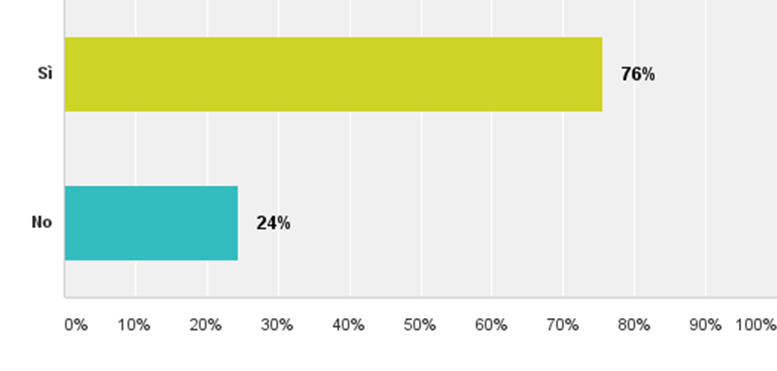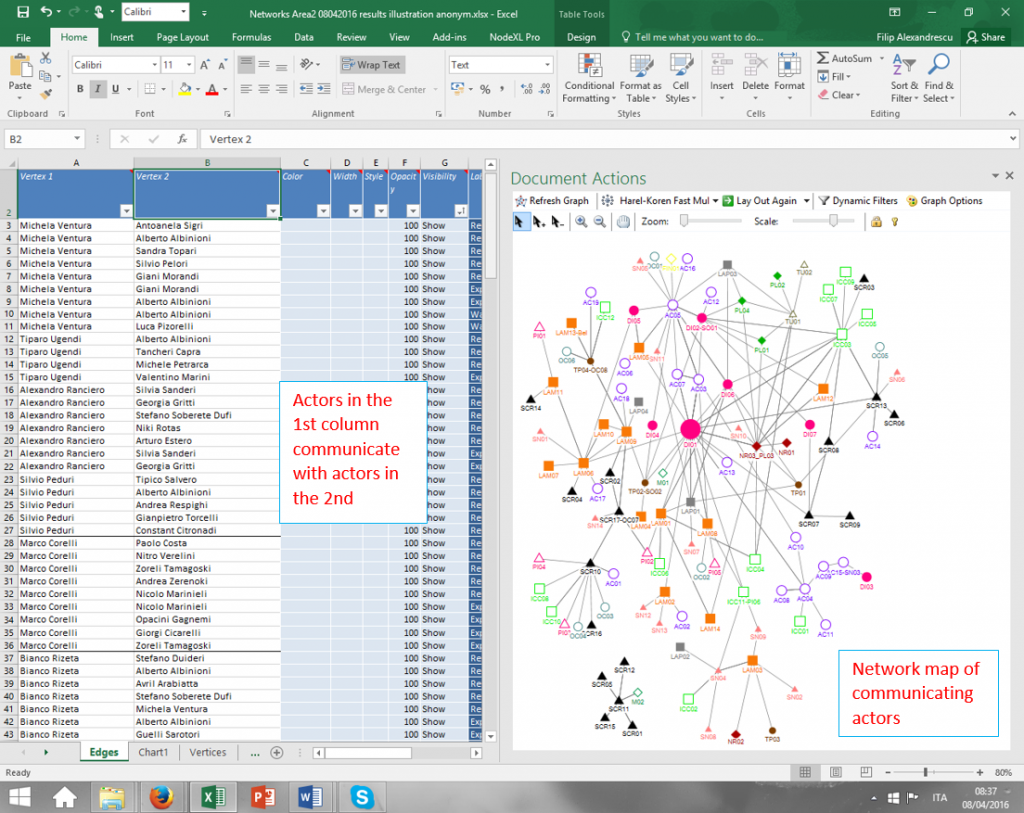Of the 50 respondents, about three quarters have indicated that they communicate on the regeneration of Area 2 with others. This represent prima facie evidence for the existence of a social network. Once a network is identified, a variety of techniques can be applied to analyse it, such as network maps.
Figure caption: Three quarters of the respondents are part of a social network dealing
with the regeneration of Area 2 of Porto Marghera (N=50)
Figure caption: Screenshot of NodeXL software with survey data inputs (left) and social network map (right)
More results can be seen in the section on “Network maps – visual representations”. The main outcomes of this research are found in two scientific articles:
Alexandrescu, F., Pizzol, L., Zabeo, A., Rizzo, E., Giubilato, E., Critto, A., 2016. Identifying sustainability communicators in urban regeneration: Integrating individual and relational attributes. Journal of Cleaner Production. doi:10.1016/j.jclepro.2016.09.076. Accepted paper full text: Alexandrescu et al. Sustainability communicators accepted MS 2016
Alexandrescu, F., Rizzo, E., Pizzol, L., Critto, A., Marcomini, A., 2016. The social embeddedness of brownfield regeneration actors: Insights from social network analysis. Journal of Cleaner Production 139, 1539–1550. doi:10.1016/j.jclepro.2016.09.007. Accepted paper full text: Alexandrescu et al. Social embeddedness accepted MS 2016

